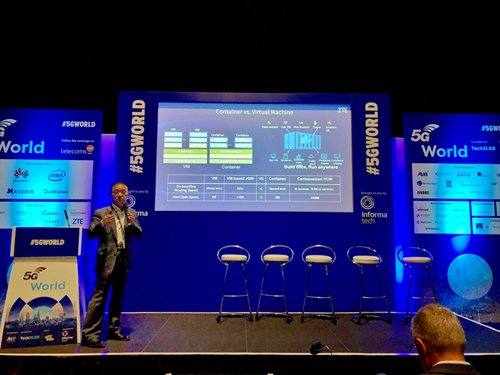ZTE sheds light upon the fully convergent Common Core at 5G World Summit
June 13, Shenzhen, China - ZTE Corporation (0763.HK / 000063.SZ), a major international provider of telecommunications, enterprise and consumer technology solutions for the Mobile Internet, today announced that Tu Jiashun, Principal Scientist of NFV/SDN Products at ZTE Corporation, has given a keynote speech at 5G World Summit in London, elaborating that cloud native-based fully convergent Common Core will bring a more flexible telecom network.

In his keynote speech, Tu Jiashun has comprehensively analyzed how ZTE Common Core can help operators create the most flexible, efficient and intelligent network, provide differentiated business capabilities, promote cross-industry business innovation, and enable thousands of industries.
ZTE Common Core adopts new service architecture(SBA) as well as key technologies, such as CUPS+ dynamic distributed deployment based on business awareness, intelligent NIC acceleration based on FPGA, and intelligent operation and maintenance of AI/ML.
In the aspect of network functions, ZTE Common Core provides operators of multiple access networks with the full access capability of 2G/3G/4G/5G. The multi-use of one network simplifies the network topology, and reduces interoperability and signaling interaction across network functions, significantly improving the KPI of the network after convergence.
By virtue of the FPGA-based intelligent network card (Smart NIC) hardware accelerated forwarding technology, ZTE Common Core can provide hardware acceleration for UPF/GW-U media forwarding. Compared with the soft forwarding solution, the Smart NIC hardware accelerated forwarding solution can reduce the forwarding latency by 90%, throughput by 200%, and power consumption and floor space by 55%. It can better satisfy URLLC and eMBB’s requirements for the forwarding capability of the edge data center, flexibly matching the 5G eMBB and URLLC application scenarios.
In terms of network deployment, ZTE Common Core has the R15 NSA/SA dual-stack capability and is oriented to R16. Operators can flexibly deploy SA, NSA or SA&NSA dual-mode networks on the same network according to their own network requirements. Resources can be reused and the architecture can be realized in one step, hence no need for the second upgrade and transformation. Operators can directly access the 5G target network so that operators’ investment can be greatly reduced.
Meanwhile, ZTE Common Core enables the R16-oriented CUPS+ distributed deployment to adjust the ratio of CU network in accordance with the service load, so as to provide the network with higher reliability while greatly optimizing overall resource utilization and saving resources by 50%.
In terms of network operation and maintenance, ZTE Common Core integrates intelligent operation and maintenance solutions. By introducing AI-based network closed-loop self-healing and self-optimization, ZTE Common Core can dynamically adjust the network topology and achieve self-management, self-organizing, self-optimization, as well as self-repairing. The solution helps telecom operators build intelligent networks, simplify network operation and maintenance, and improve operation and maintenance efficiency by more than 2 times.
"ZTE Common Core stood out in the 5G SA core network test launched in September 2018. It is the first to make the 5GC call based on the 3-layer decoupling and SA architecture, the first to implement the bidirectional interoperability between 4G and 5G, and the first to complete the functional testing of AMF/NSSF/NRF/SMF/AUSF/UDM/PCF/UPF multi-network elements,” said Tu Jiashun.
To date, ZTE has more than 420 commercial and PoC cases around the world, and has entered into 5G cooperation with more than 40 operators on a global scale to jointly promote the development of 5G technologies and standards, thereby accelerating the 5G commercialization.
